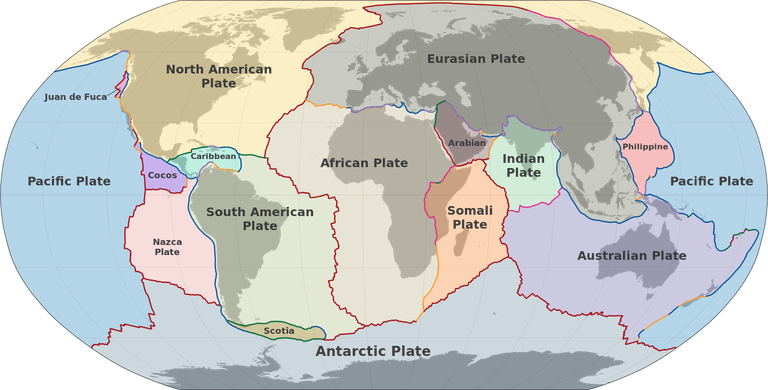The meaning of plate circulation theory?
Scientists believe that the Earth's surface consists of several small and large moving plates or slabs. The theory that explains the movement of these plates is known as the theory of plate circulation. According to this theory, there are 27 plates in the world. Out of which 7 large plates and the remaining plates are relatively small.
The major plates are the Pacific Plate, Indian Plate, African Plate, etc. And among the smaller plates are the Caribbean Plate, Arabian Plate, Philippine Plate, etc. These plates also rotate with the earth's motion. Earthquakes occur when one plate collides with another plate. In the light of Plate Circulation Theory / Mass Circulation Theory, zoogeographical regions are commented on faunal distribution as follows:
The idea of the plate circulation theory of the spread and evolution of animals is very prominent. Scientists believe that fish, amphibians, and other lower vertebrates, including reptiles, were well established when the continents began to drift apart. Each region has more or less representatives of the same animal. But mammals did not develop at that time. During the Miocene and Pliocene periods, the impact of omnivorous mammals cornered the primitive monotrimata and marsupials in almost every major region of the world except Australia and South America.
Australia and South America were separated from the mainland before the immortalized mammals flourished. As a result, early mammals began to thrive on these two continents without competition. That is why Australia has two genera of monotrimata and six genera of marsupials. Apart from bats, there are no immortal mammals. Early Prototherian and Metathebian Late Jurassic and Lower Cretaceous in southern Pangea.
fell into Later, along with early mammals, advanced eutherian groups diverged from western Panagia during the Late Cretaceous and Early Triassic. Metatherians and early eutherians or prototherians took over South America in the middle of the Triassic period. Then North America reconnected with South America in the Paleocene with the Panamanian thrust.
At the beginning of the Pleistocene period, relatively advanced eutherians from the north entered South America in large numbers across the Central American land bridge. As a result, many native mammals became extinct in South America. The opossum is the only native mammal in South America that has escaped extinction.
I am a student of zoology and credit for this article goes to Madam Rita Parvin, Sir Shamol Shordar, Sir MD Rafikul Islam, Sir Shafiullah Shopon

Thank you very much ❤️